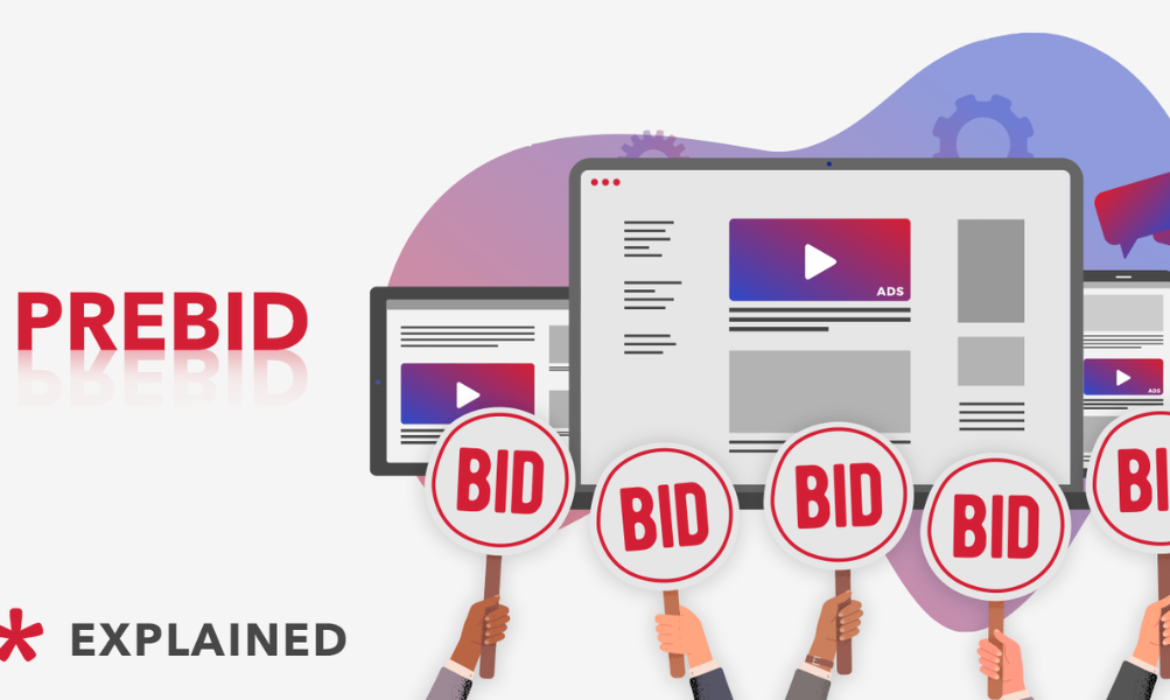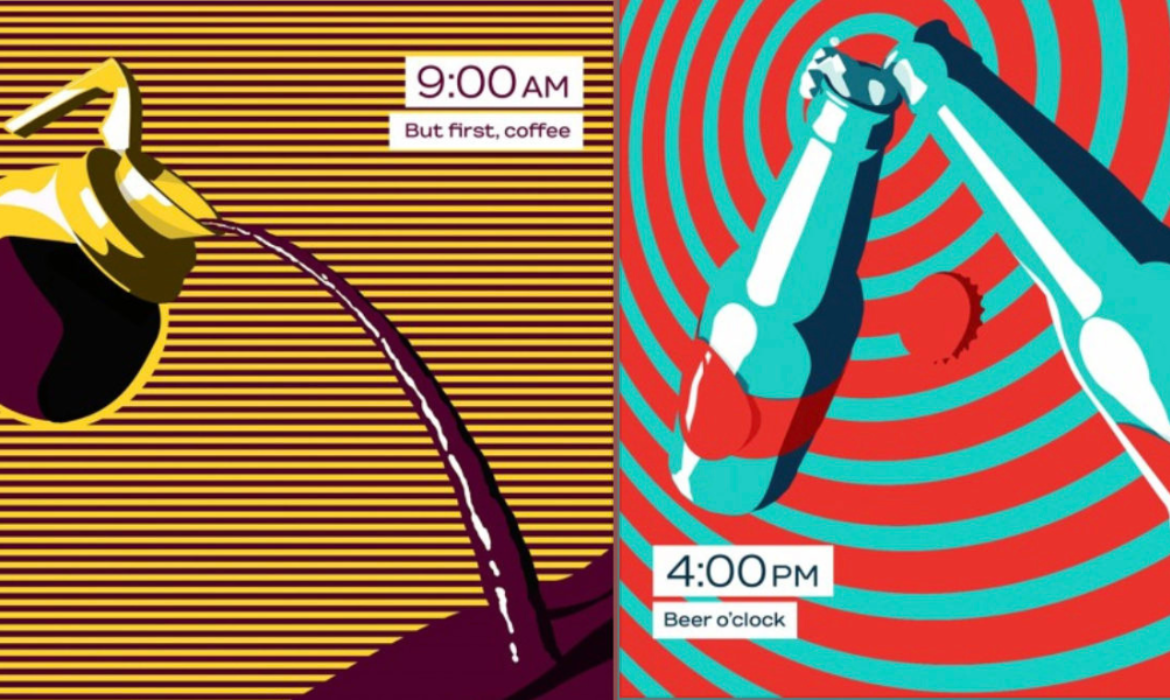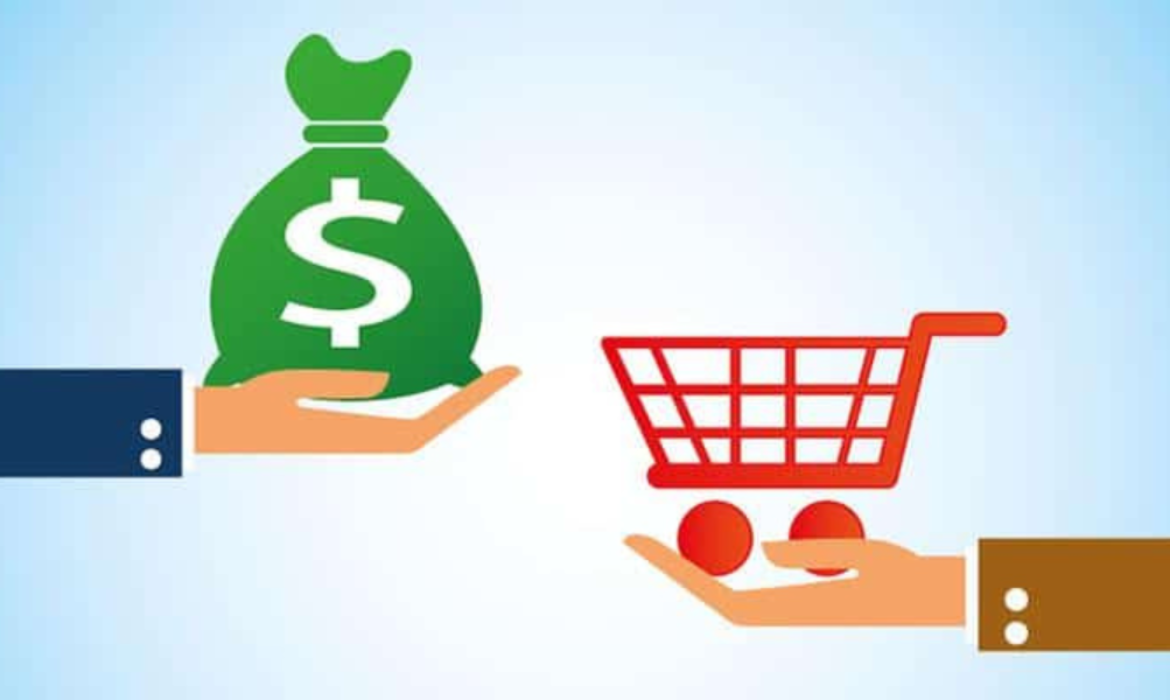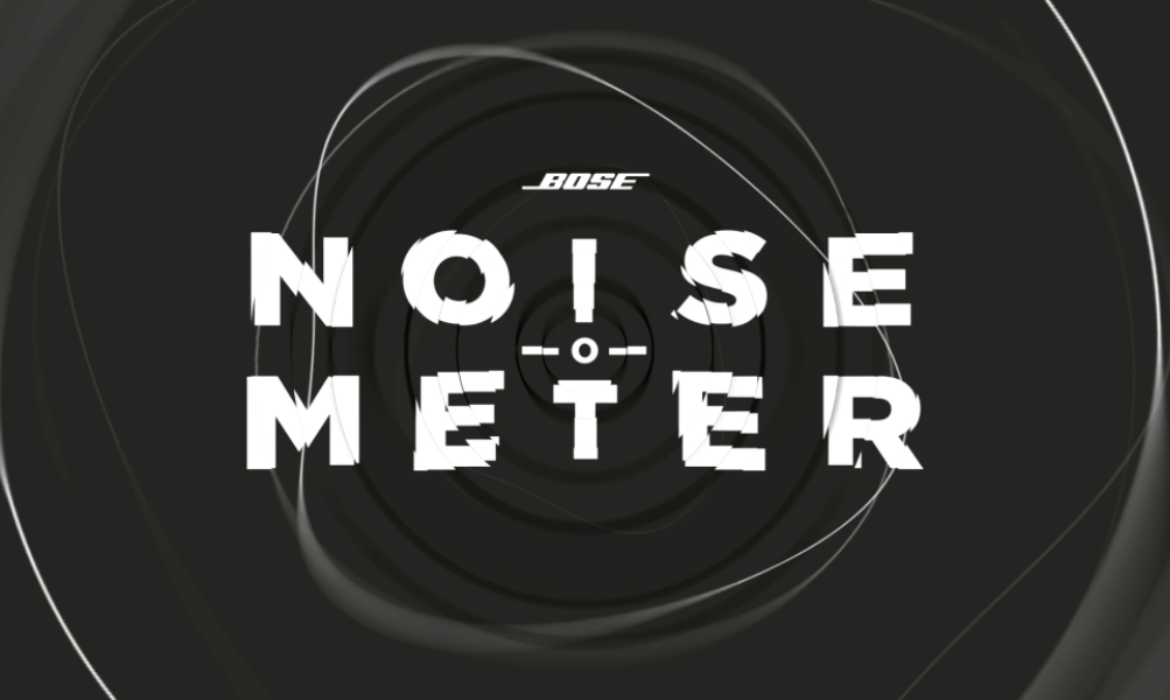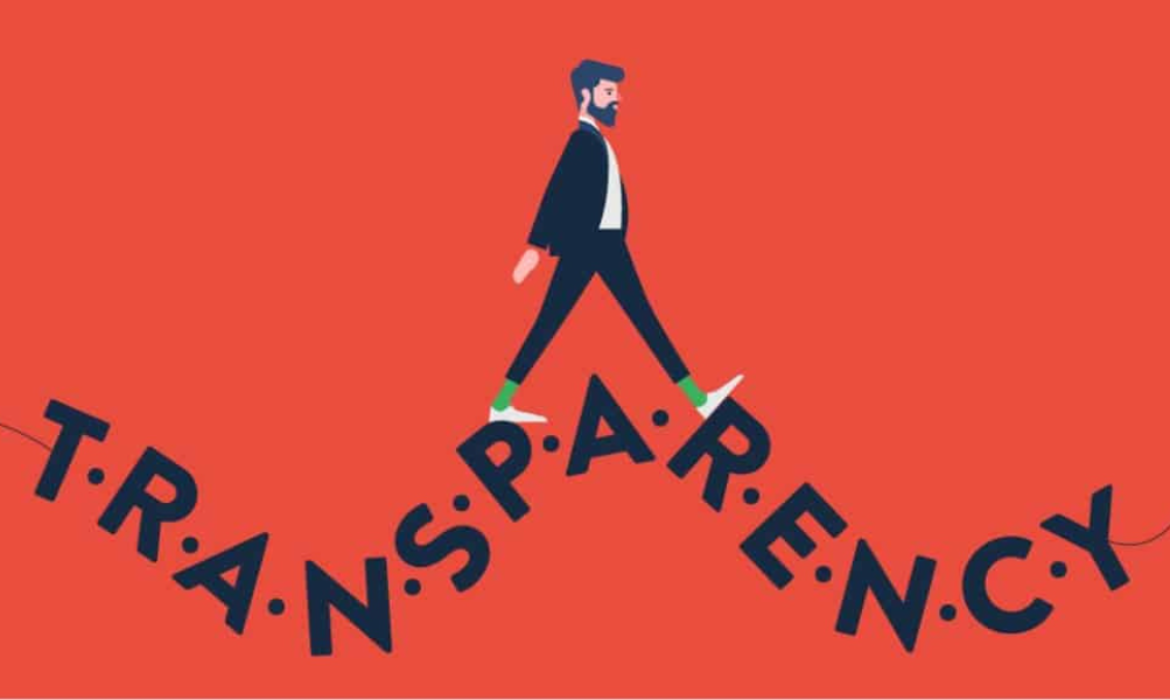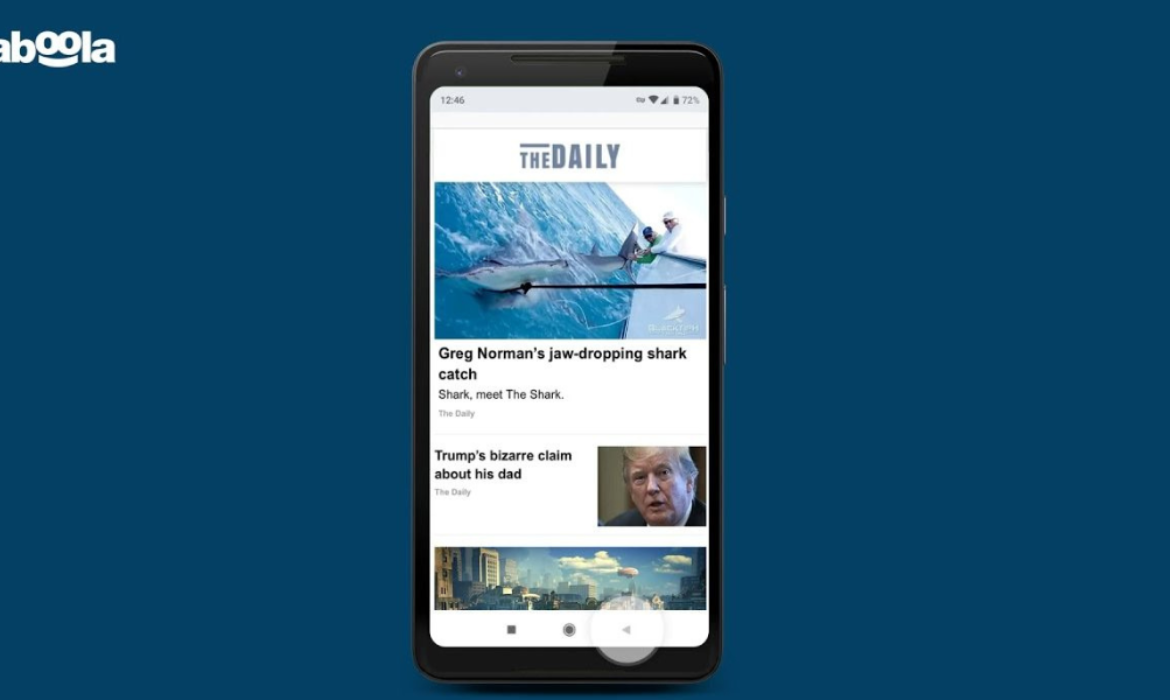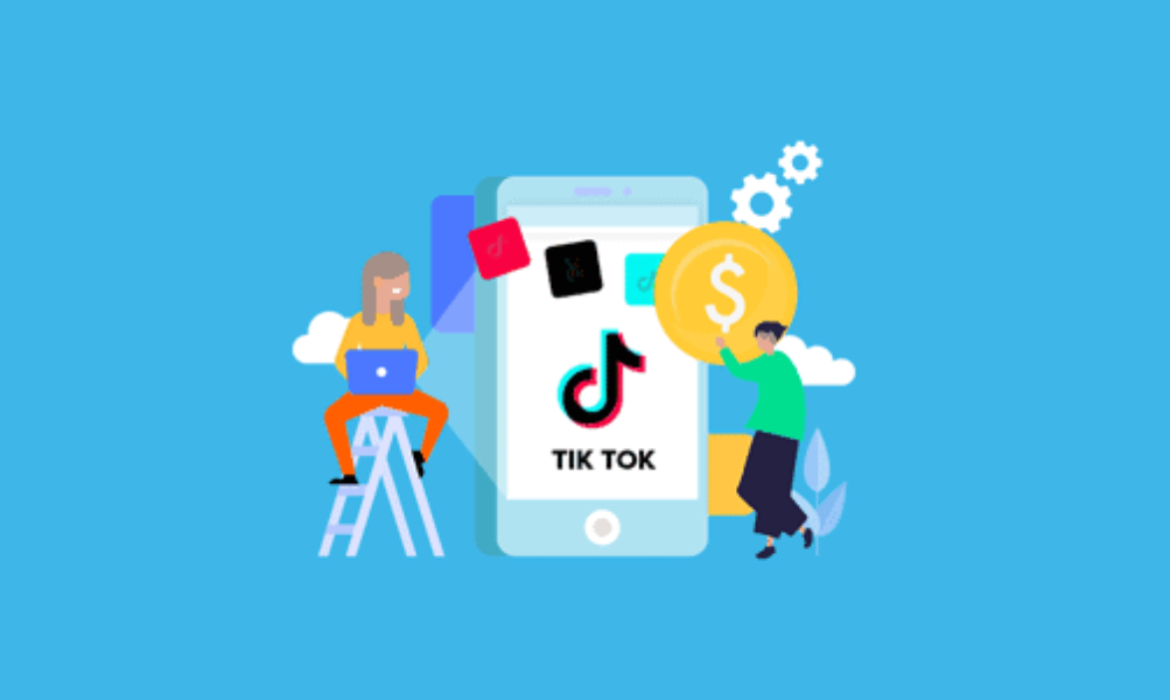Prebid Server Aims To Ease Header Bidding For Programmatic Advertisers
Prebid Server is an open-source server-to-server header bidding solution. The prebid server gives publishers access to the largest header bidding marketplace. It’s free to use, transparent, and integrated with more than 150- demand partners and many managed solution partners. Michael Richardson, Senior Director, Product Line Management, AppNexus said,
It is an infrastructure of a streamlined adtech ecosystem that maximizes value for everyone, not just Google.
According to Prebid.org, a prebid server improves your page’s performance by running the header bidding auction on a server. This will improve your page’s load time, which should improve your users’ experience.
In recent years, it has grown alongside the programmatic market and extended support for native, video, apps, and connected TV. Sellers are used to the benefits of the unified auction offered by Prebid by adopting multiple wrappers across multiple formats. Now there are calls for simplicity from buy-side as well as platform-supported, server-side Prebid solutions to reduce the burden on publishers.
Publishers dealing with multiplying wrapper formats
Prebid’s biggest asset ‘open source’ is a limitation for some sellers. The open-source nature of Prebid leads to transparency, which means publishers should take the matter in their own hands or find an expert technology partner.
Publishers lack the expertise to manage Prebid and its open values and eventually, this has led some of them to embrace proprietary wrappers. But proprietary wrappers have their drawbacks – the disparity in counting methodology and payment can result in buyers and sellers struggling to transact. Also, some wrappers exclude certain types of demand from participating – in cases where internal teams haven’t updated or built third-party adapters to integrate proprietary wrappers into the auction.
Many publishers have been running Prebid, Amazon TAM, and Google Open Bidding simultaneously. As a result, DSPs are receiving impressions once from each SSP, multiplied by the wrappers. The growing dissatisfaction in the DSP community over duplication requests and declining to participate in Open Bidding led to initiating mandates that the SSP community and publishers pick a single wrapper format.
In the upcoming period, it will be clear how the industry adapts but many publishers are expected to choose Prebid as a primary wrapper.
Also Read: Advertisers Look For Greater Transparency In Programmatic Ad Buying
Prebid server for Mobiles and CTV, Easy-to-use formats
A narrative was out in the early evolution of header bidding that “server-to-server was the future.” By running of an auction on the server-side than the user’s device- logic is- server-side heading creates a unified auction in a new environment, reduces latency, and improves user experience.
This approach has three issues – publishers couldn’t run easily as client-side, low participation of bidders, and required an additional user-match layer, reducing revenue.
Prebid Server is the solution to all these problems. Its 60 bidding partners show demand is no more a concern. Prebid sever will not need an additional user-match layer longer as cookies decommission, Prebid Server’s advantage in user identity only grows. It also allows header bidding in mobile applications and connected TV.
Many leading providers are investing in solutions to combine the Prebid server with their own technology making it easier for sellers to run server-side header bidding across all formats and retaining the benefits of an open-source wrapper.
Future of Prebid Server
It is exciting to witness the years of investment in Prebid paying off and the Prebid.org community growing. Publishers and Adtech partners working on the web inventory have adopted header bidding as an important technology in their monetization stack.
Looking forward to seeing how TV programmers and distributors leverage Prebid to optimize their business. It will be interesting to see how different wrappers start using the bid data, and apply data and machine algorithms to further optimize for higher revenues.
Publishers looking to contribute to Prebid and learn more about it, join Prebid.org as a member company.
Financial Report Card Of The Global Giants And Industries In COVID-19
Media companies are facing distress owing to the pandemic crisis, particularly those relying on advertising revenue. The current situation is precarious that compelled companies to roll out furloughs, pay cuts, or layoffs.
Even though publishers are recording high traffic, there is a mismatch in demand and supply in the ad market. Subscriptions are a silver lining for publishers but again sustainability is in question. Many businesses are impacted due to cancelled live events like sports that would bring a vast sum of revenue. Newsstands sales have also witnessed a fall.
Keeping the above factors in mind, below is the analysis of leading media companies’ financial and quarterly reports and their progress in this crisis.
CONGLOMERATES
Bertelsmann: Ad funded businesses were affected while music, services, and education business performed well.
The German media conglomerate Bertelsmann’s revenue declined by 2.7%. The advertising-funded business Q 1 was “highly affected” by the pandemic. Within the digital business RTL Group specifically, the revenue was down 3.4 % owing to the cancellation of ad bookings at the start of March or postponement of productions.
Music business BMG, its Arvato services business and its education business performed well. Subscription to the online streaming services was up 34% Y-o-Y.
Comcast/NBCUniversal: Broadband business upticks whereas rolling out Peacock streaming service.
Comcast is a large company with its broadband business marks an uptick with signups. and revenues up by8.8%. On the other hand, its theme park, TV and film production business is on hold.
NBCUniversal and newly acquired Sky TV cannot broadcast live sports. The company expects the advertising business to be down significantly in Q2
NBCUniversal Q1 revenue was down 7% and it rolled out ad-supported Peacock streaming service to Comcast customers in April.
Disney: Theme Parks and Sports Broadcast Shut, Disney+ subscribers up.
The crisis led to shutting down of theme parks, and productions and theatre movie releases were put to hold. Ad revenue at its TV business was affected as ESPN couldn’t air any live sports.
However, it stepped up the launch of ad-free streaming service in European countries. Disney+ had 33.5 million subscribers by the end of Q1 and an average of $5.63 in monthly revenue per paid user. Disneyland Shanghai did reopen, at 30% capacity on May 11.
WarnerMedia (owned by AT&T): Q1 Revenues severely hit.
Recently, folded its Xandr advanced advertising unit into a bigger WarnerMedia business.
Q1 revenues of WarnerMedia was down 12% on the year-ago quarter to $7.4 billion due to lower ad revenues in March on sports cancellations. Movie productions are also on hold.
PUBLISHERS
News Corp: Circulation and Subscription revenue grows, Ad revenue takes a hit.
Rupert Murdoch’s News Corp includes various leading and established brands like The Wall Street Journal, The Sun, and many more in U.S, U.K, and Australia.
Overall revenue declined 7.8% to $2.27 billion in Q1 due to weak ad business, low ad revenues, and negative currency movements. April ad revenue for Dow Jones declined 20% from the prior year whereas for News Corp Australia and News UK fell by more than 45% which includes negative currency impact.
The Wall Street Journal reported circulation and subscription revenue growth by 1% reaching a record subscriber base of 3 million overall, of which 2.2 million are digital-only.
The New York Times: Focus on Subscription Revenue to thrive in the post coronavirus world.
The NYT is leading more emphasis on subscription revenues to reduce its dependency on ad revenue to be in a better position and thrive post coronavirus world.
NYT recorded the highest quarterly increase in new digital-only subscriptions-up 587,000 in Q1 -leading to a 5.4% increase in subscription revenue to $285.4 million. Ad revenue fell by 15% and likely to fall further in Q2 somewhere between 50% and 55%.
“Other revenues” segment is estimated to fall around 10% as licensing revenue from Facebook News is expected to be “more than offset”- by lower revenue from its live events and its TV series.
TV AND CABLE
Discovery: Their channels are new sports.
Discovery CEO David Zaslav on the Q1 earnings call said, “Our channels are the new sports — the numbers are huge” around its lifestyle channels like HGTV, Food Network, and DIY. The engagement with the characters and talent is enormous. Discovery is also saving money productions through the pandemic as the film shows from home.
Total revenue declined from 1£ in the first quarter to $2.68 billion and expects advertising revenue to fall significantly in 2020. Many sports events are postponed and 90% of the sports deals have force majeure provisions or provisions to not pay for the content that is not received.
Fox: Fox News gains the largest audience.
Revenue for the three months to March 31 rose 25% supported by the forecast of Super Bowl in February, an increase in political advertising, and growth in affiliate revenue. But in March entered coronavirus crisis leading to the postponement of sports events and suspensions of entertainment shows.
80% who signed up for Fox Nation streaming service from Fox news continued to become paying subscribers and advertisers from sectors like technology and communications looked for the transition from sports buy to news buy. Ad revenue within local TV stations to be down 50% from last year.
ViacomCBS: Streaming revenue continues to grow and more on its way441.2 b
Revenue for Q1 fell 6% to $6.67 billion of which advertising revenue marked a 19% drop though a comparison to last year would be unfair when it aired Super bowl and basketball tournament.
Streaming continues to grow- domestic and digital revenue up by 51% to $471 million and had 13.5 million streaming subscribers. It intends to build “a broad pay streaming product in multiple markets” over the next 12 months. It announced a distribution deal with YouTube TV, which will carry 14 ViacomCBS channels
DIGITAL GIANTS
Alphabet or Google: Faring well in this crisis and a better situation.
Q1 revenue stood at $41.2 billion, up 13% Y-o-Y basis(including Google cloud revenue and the ‘other bets’ segment).
According to CFO Ruth Porat, Youtube’s March revenue “decelerated to a year-on-year growth rate in the high single digits” and Google Network March revenue declined “in the low double digits.”
Google Cuts Marketing Budgets by 50%, Freezes Hiring, and launched a “Journalism Emergency Relief Fund”.
Baidu: A closer watch on the signs of recovery in the upcoming result.
Chinese advertising giant Baidu was the first to report the coronavirus crisis set to affect media companies and expect a revenue drop of between 5% and 13% due to advertiser pullback.
In April, it suspended updating content on certain newsfeed channels within its app due to government directives which may impact its marketing services revenue. On May 18, Baidu will give the next quarterly update, and would be worth watching whether there is any recovery in the ad business.
Amazon: The advertising business grew as directly related to eCommerce sales
Amazon’s Q1 revenue soared as consumers quickly shifted to shopping online amidst the coronavirus crisis. Conversely, revenue rose 26%, and profit dropped 29% compared to last year’s quarter. The cost grew to finish the surge in orders
In the financial statement, the ‘other’ category is advertising business- revenue grew by 40% to $3.9 billion in Q1. The growth is consistent with a little downward pressure in March but no major impact as its directly related to eCommerce sales. ‘
Facebook: Post Strong Earnings, Exceeds Projections
Facebook ad revenue grew by 17% Y-o-Y to $17.4 billion despite the instability in the digital ad market due to COVID-19.
Facebook saw strength in the advertiser’s vertical- gaming, technology, and e-commerce whereas travel and automotive were the weakest verticals in the first three weeks of March.
Facebook had Pledged $2M Grant Funding To Support Publishers Financially.
Snapchat: Users and Revenue Increases, ad spend declines
Snapchat reported in its Q1 2020 earnings – strong gains in both users and revenues but a dip in advertiser spend despite the growing concerns about the coronavirus pandemic. the company reported a 44 percent (Y-o-Y) increase in its first-quarter revenue to $462 million. Snap benefited as people used animated lenses to keep in touch with loved ones in this lockdown. Snapchat’s daily active user (DAV) base reached 229 million.
Direct-response advertising accounts for more than half of the company’s revenue and clients in sectors like gaming, e-commerce, and consumer packaged goods continue to spend even during the crisis.
Twitter: Work in progress over AdTech concerns
Twitter’s user growth jumped in March as people rushed to check the latest news updates related to the coronavirus. Despite a 9% growth in daily users, revenue was up only 2.6% to $807.6 million and reported a loss of 8.4 million in Q1 results.
In comparison to its competitors, Twitter doesn’t have a direct-response advertising business. Therefore, the company is improving its mobile application promotion products and rebuilding its ad server which is expected to be up and running by Q2.
Mobile Gaming Industry Bank On People Locked Inside Homes Due To COVID-19.
- Even as stock markets plummet two sectors actually doing well are streaming services and online gaming.
- The mobile-gaming category is finding the brightest spot even as other businesses face the heat of countrywide lockdown owing to coronavirus outbreak.
- The mobile gaming category is more than a $60 billion-a-year market and seeing a massive surge in ad revenue.
Even as businesses across sectors face the heat of lockdown owing to coronavirus pandemic, online gaming has witnessed a welcome spike. There are more than 2.6 billion gamers, each spending over eight hours per week playing worldwide.
Why it matters
As hanging out gets difficult, gamers are active members of their communities, socializing with each other and exploring the virtual world – A world free of coronavirus. Recently, Netflix CEO admitted that when it comes to screen time, video games and not streaming services is their biggest competitor. For instance, Netflix has 167 million members, whereas one of Epic’s games, Fortnite, has over 200 million users.
Driving the news
Video games used to be played on big screens through expensive consoles but now when we think of video games, we will think of our mobile phones instead. Mobile gaming is emerging as a dominant digital ad platform and marketers are planning to leverage it as the world goes online from home.
- The months of quarantine and pandemic has changed brand engagement with the consumers. People are streaming entertainment, watching the news, and engaging with friends and family on playing games especially mobile games. Therefore, marketers are reimagining their brands and agencies are restructuring to communicate effectively on behalf of the brand and seize every opportunity on the way.
Yes, the trends are changing. The future of addressable video lives is now in the palm of your hands. The app is your TV and mobile gaming is primetime.
By the numbers: AdColony new survey in March 2020 showed mobile gaming jumping more than 24 percent as the mobile audience grew more reliant on smartphones for entertainment while sheltering in homes.
- Increase in mobile game downloads by 60 percent compared to the 30-days before the survey month March.
- The increase in casual mobile games is 28 percent whereas board game downloads grew 16 percent and there were major acquisitions too.
- Word game download grew 8 percent with a six percent lift in the already high number of sessions.
- Hardcore gamer categories like action, adventure, and role-playing have started to move upward.
61 percent of marketers polled said the coronavirus situation is leading to changes in content that they are comfortable having their ads placed adjacent to.
The big picture
Mobile games have more reach than traditional T.V. Additionally, they are backed by the best parts of digital buys – addressability, creativity, analytics, and attribution. This allows advertisers an opportunity to rethink how to leverage sight, sound, and motion to engage customers combined with the surge in users.
With In-app gaming, the brand is safe and accountable. For viewability, fraud, and accuracy, measurement vendors have built programmatic solutions, and data is defined and virtually universally accessible. In these uncertain times, the app has a lot of scope with innovative opportunities for smart marketers to go big on consumers.
Wunderman Thompson Brings Agency Office Buzz To Employee’s Homes.
COVID-19 has compelled the world into self-isolation which means working from home indefinitely- which is challenging for highly collaborative and creative industries like marketing and advertising. Technology bridges the gap of connectivity but nothing can replace the buzz that comes from working in a busy agency. Therefore, Wunderman Thompson Canada is keeping you company with the ambient noise of an agency office from the pre-pandemic times.
The 8-hour soundtrack spans from 9 a.m coffee to 4 p.m happy hours, every elevator ping, chatter, and email notifications of a typical office day, recorded by the agency’s remote employees. The audio is called ‘Isolation Station’ on SoundCloud and is hoping that this tracklist might recreate the familiar and nostalgic buzz which will help employees feeling sick of working from home in the pandemic, get the feel of a more productive setting. Even the track names remind of office life with titles such as “But first, coffee” and “Beer o’clock”.
Wunderman Thompson Canada executive creative director Ari Elkouby said that they tapped real Wunderman Thompson Canada employees to record themselves having conversations with colleagues over Microsoft Teams and on their mobile devices to make the soundtrack truly authentic.
“We created a story map over the course of eight hours and got employees to contribute to different parts of the day. That dialogue was mixed over an audio bed of office ambient sounds to complete the track.”
Ari Elkouby also mentioned that Isolation can be scary and less ideal for many, however, this is to show the team and industry that we are together and provides much-needed comfort in a creative and fun way. Who knew that a conference room discussion meet can be so nostalgic?
This is similar to a campaign from the New York Public Library, in which the sounds of the bustling New York City were recreated.
This is also an interesting read: Noise-O-Meter By Bose Rewards Rising Noise Level With Discounts On Its Headphones.
Publishers Withdraw Ad Inventory From The Market To Protect Ad Prices
Generally, conventional wisdom says a publisher would sell more ad units at a lower price in a weak market. However, publishers are doing the opposite and pulling their inventory to take a short-term revenue hit and protect their inventory price from falling further. This will help their business in the long run by not falling into the trap of price cuts which would be difficult to win back.
Programmatic advertising market operates under an auction system, lower advertiser demand, and higher web traffic to publishers site has pushed programmatic ad CPM’s down by 10%-20%. Since buyers are now more loyal to price than brands, publishers are preventing prices to tank further to a point of devaluing their inventory over the long term. While some publishers are reducing their inventory in the open market to keep the prices from falling further, others are using ad slots to push internal subscriptions or eliminating ad slots from the pages. For instance, Buzzfeed is getting rid of display ads that receive lower viewability scores.
Unfortunately, the publishers are acting independently and not considering the impact on the broader market. They aim to protect their own inventory prices from falling low as they fear it will take a longer time to return to the previous levels especially if advertisers are buying at a bargain now and unwilling to pay more later when things are back to normal.
As quoted by Digiday, Andy Ellenthal, CEO of the ad sales reporting platform STAQ shares a similar opinion and said, When advertisers return to their normal spending amounts, “they’re going to absolutely remember that a publisher was 25 cents in April of 2020.”

Image Credit: Digi Day
As per the above STAQ graph, the average U.S. display ad CPM in the open auction has fallen from a high of $1.34 on March 1 to $0.91 on May 3.
Even though average CPM has bottomed out on April 8 at $0.83, Andy Ellenthal believes CPM’s will not experience a U-shaped recovery but more of an L-shaped recovery, a slow and steady upward trend. This means publishers whose CPM has fallen least will have to cover the shorter route to return to previous prices.
DigiDay interviewed a few publishing executives and one publishing executive said,
“I’ve got to manage my supply to keep it in balance with demand, and demand has fallen so fast that now we’re trying to get ahead of the game. How much supply can we take off the table to control the CPM without actually truly hurting our business more than it’s hurt now?”
A second publisher executive said that the removal of one ad unit across their sites is equivalent to more than 1 billion monthly impressions. It is a generous number but not significant enough to move the market. Media Math’s DSP sees more than 180 billion impressions each day.
On this Ethenall said,
“These publishers always have to strike a balance between fill and yield. Chances are they are not going to fill 100% of their ad slots right now. If you have a billion impressions that go unsold anyway, what’s the value of them if they’re only pulling down pricing for your better impressions?”
Many publishers have adjusted their floor price to a minimum level at which the inventory can be sold. However, the lower ad demand has made the publishers pull inventory and protect prices as inside programmatic advertising, everything revolves around “Price.”
One of the publishers used to increase floor price by 15% every two weeks since the beginning of Q1. However, in the second half of March, a significant number of impressions went unsold. The publisher could have reduced the price to sell his inventory but he didn’t and said, “in no way do I want to drop my floors to 25 cents because I don’t want crappy ads coming in.”
Lower the ad prices, the higher the chances of giving in to undesirable advertisers who can jeopardize the ability to attract genuine advertisers. Publishers use this opportunity of lower demand to seek out prospective advertisers, but they are wary that lower CPM can alleviate advertiser’s interest in doing programmatic direct or private marketplace deals.
Publishers are also looking at this opportunity to experiment repurposing of impressions that can boost their other businesses and become less reliant on advertisers. For instance, if a publisher can see that house ad proclaiming its subscription product can attract more subscribers and yield than those impressions to advertisers, they would monetize on house campaigns and not take revenue from programmatic advertising.
Noise-O-Meter By Bose Rewards Rising Noise Level With Discounts On Its Headphones.
Wunderman Thompson and Bose launches Noise-O-Meter to bring noise-cancelling savings to loud homes.
The new normal for millions of office goers is Working From Home (WFH) owing to COVID-19 pandemic. Many are able to maintain their productivity while working from the home offices but it may not be true for all. The volume indoors can be so high that the streets outside may sound calm and quiet.
To combat this cacophony, Bose is taking a singular approach and offering savings on its newest and innovative noise-cancelling headphones: The louder your home office, the larger your discount.
The new video ‘Noise-o-meter’ is developed by Wunderman Thompson, Dubai, and launched it in UAE. It measures ambient noise levels and instantaneously converts the decibels into discounts.
Bose Noise-Canceling Headphones 700 was launched in a new era of audio technology. Bose partnered with Wunderman Thompson Dubai, which engineered a unique algorithm for interpreting sound data. Thus, offering Bose fans a playful, enriching, and rewarding way to get their hands on these unrivalled headphones. The video ad is a blend of creativity and innovation.
Pablo Maldonado, Executive Creative Director at Wunderman Thompson Dubai, explains:
Unwelcome decibels are everywhere, from the whooshing hairdryer to that rattling washing machine and those boisterous neighbors. We wanted people to have some fun even as they save more and bring the calm inside. What makes Noise-O-Meter extra rewarding for us is the fact that it was dreamt up and brought to life from our home offices!
Real-Time Marketing Is Disruptive, But How Real It Really Is?
80% of business buyers expect companies to respond and interact with them in real-time suggests a report.
To date, most real-time marketing of leading brands focuses on demand generation, advertising, promotion, sales, and service. In Gartner’s report last August, Vice President analyst Mike McGuire said,
“Event-triggered and real-time marketing will have the biggest impact on marketing activities in the next five years…However, before marketers can realize the benefits of these technologies, they must first become proficient in predictive analytics and delivering personalized communications.”
The research firm reports brands are combining behavioral analytics and marketing automation to deliver real-time marketing efforts based on specific customer behaviors -but according to the findings, many marketers lack a ‘real’ business case for real-time engagement.
REAL PROBLEMS OF REAL-TIME MARKETING
The primary problem is, there are 7,000 marketing technology solutions but there is no way to connect and combine all the different systems together in a way to deliver sustainable real-time marketing efforts, points out Pegasystems Product Marketing Manager Andrew LeClair.
He shares that there is data all over the place but our systems and people are not connected. In his Discover MarTech presentation, he said,
“There’s a bunch of complexity. We’ve got inbound that’s over here and outbound over there — and paid is off on some island somewhere nobody knows. Not to mention all the other systems that touch the customer — things like customer service or billing applications.”
Marketers are unable to put multiple platforms together to create a centralized decision-making authority- one that can deliver actual real-time marketing events based on customer engagement and behavior.
HOW TO MAKE REAL-TIME MARKETING WORK

Image Credit: Marketing Land
With real-time in batches taking hours, hundreds of data integration, disconnected inbound and outbound- customers get lost in the shuffle.
During the webinar, LeClair said there is a need to find and deliver the next course of actions across channels in under 100 milliseconds. What does this mean?
This means real-time marketing is reliant on four specific capabilities- detection, data, decision, and delivery. At first, marketers must be able to detect or sense a customer’s need or opportunity. This means having systems in place to detect opportunity via simple events like conversations with CSR, or click-through emails. Conversely, there are non-events – events that were expected but didn’t happen.
After the events have been detected, data needs to be gathered before the next best action. According to LeClair, marketers need to access and assemble real-time information – customer’s emotions, intent, and behaviour. Data throws some light on their end goal and their location is also needed. All this information is essential to identify their context and what are their needs
After a comprehensive data assessment, the next best action can be determined and optimize for a real-time marketing opportunity. This may include delivering the right content at the right time, a personalized offer, or sending emails to follow up or more.
When marketers have fine-tuned these four capabilities, they can determine whether or not it’s time to sell to the customer, nurture the relationship or decide not to engage if it doesn’t add value to the given situation.
On the Under 100- milliseconds challenge, LeClair said in the webinar,
“From initial detection to assembling our data to making that decision to then executing — and how that impacts the customer experience — if we’re able to do all of that in less than 100-milliseconds for any channel, that is the ideal state. That’s where the best in class organizations live and breathe.”
BENEFITS OF REAL-TIME MARKETING
LeClair shared the results of the impact of real-time marketing efforts from a Total Economic Impact report conducted by Forrester on Pega’s clients. Companies generated $226 million worth of incremental revenue gains and $193 million in retained revenue on implementing Pega’s real-time marketing tools. He further commented,
“Because we’re sensing needs in real-time, we can be proactive in our retention efforts, reducing our churn, reaching out to the customer before they even get the chance to think about leaving, And that’s really, at the end of the day, how we optimize for customer lifetime value which is what all of this is about.”
Advertisers Look For Greater Transparency In Programmatic Ad Buying
Time and again, “Transparency’ has been a cause of concern for advertisers in the programmatic ad buying. This has been a long time pending issue which still remains unresolved as advertisers try to uncover what happens to money spent on programmatic ads.
Ad spend is falling and advertisers are again seeking greater transparency into the ad-buying supply chain. Hidden fees, fraud, viewability, and brand safety are the growing concerns that need immediate attention.
Trade body ISBA studies reveal that nearly half (49%) of ad buys disappear before reaching publishers and 34% of this money is the disclosed fees agencies and ad tech vendors take for trading impressions. However, 15% cannot be attributed to what the report called an ‘unknown delta’ on the supply chain. The amount of money that reaches publishers is lower, as the report did not consider ad fraud and ad viewability.
As reported earlier, a noticeable amount of programmatic dollars doesn’t reach the publishers and it is getting increasingly harder to keep a track of where it goes. The trade body struggled for nine months to gather data from the ad tech vendors to make a report on this and when it received data is was unusable.
PwC collected information for the study was data on 267 million impressions traded between 15 advertisers, eight agencies, five demand-side platforms, six supply-side platforms, and 12 publishers from the Association of Online Publishers from Jan. 1 to 20. March. Of those impressions, only 31 million (12%) were actually analyzed by matching log-level and aggregated data across 290 different supply chains.
PwC reported that it was highly cumbersome and hard to collect data on each impression. Ad tech vendors were conservative in sharing data due non-disclosure agreements and data collected was in different formats making it difficult to trace an advertiser’s money to so many different publishers. The advertisers involved in the study were non-premium 40,525 sites on an average.
Generally, an advertiser or agency decides to buy impressions and pay for them on DSP while publishers use SSP to sell their inventory at advertisers. Data on impressions from these two platforms are matched up and PwC did the same. However, data could not give financial transparency for the advertisers and publishers There were still costs in the ‘unknown delta’ that remains unidentified on the report. For instance, hidden fees can be a combination of additional ad tech vendor fees, post-auction bid shading, trading deals, and other unknown factors.
As quoted Sam Tomlinson, marketing assurance partner at PwC in DigiDay,
“This is more because the programmatic ecosystem is built on legacy processes that are a mess.”
Graeme Adams, head of media at BT Group said,
“We desperately need to see a common set of standards adopted and more openness in this market, so that every penny spent is accounted for. If this happens, we’ll invest more in the channel; if not, we will cut back and reshape our trading approaches.”
To conduct such high and intense study is a big expense. For instance, It costs more than £1 million ($1.2 million) to collect and process the data from different sources in ISBA’s study. A lot of emphasis is given to attain log file data by marketers. If the ISBA report proves anything that the log file data can reveal everything about transparency and nothing at the same time.
Ruben Schreurs, managing partner at digital media consulting firm Digital Decisions responds to log file data and said,
“Using the overly sophisticated approach of trying to match log-file data in real-time is like buying the IBM Watson supercomputer to calculate 1+1.”
He added that advertisers should have a sensible and valuable approach by running a periodic review of their net spend on publishers and match it with publisher data cumulatively. This will help to get the right and required output to make value-driven decisions on how to optimize the value chain and avoid complicating technologies.
Nevertheless, the report findings can help the adtech industry and give the insight to enhance financial and data transparency as regulators on impressions as regulators dominate.
Steve Chester, director of media and advertising at ISBA said,
“If the ad industry can be seen to be demonstrating that we can create a more open and transparent market then it could avoid the necessity of being regulated.”
Project Agora Partners With Taboola For A New Native Content Solution- ‘Explore More’
Publishers have a new tool in their monetization kitty with the launch of Project Agora’s new Native Content Solution, Explore More.
Over 15,000 websites use Project Agora’s Native Content feature in partnership with Taboola to drive revenue, increase engagement and page views, and acquire new customers.
What is Explore More?
‘Explore More’ is designed to make mobile users, who are visiting the publisher’s site directly from social media and apps to stay longer and re-engaging them before they exit with the relevant content recommendation.
Explore More serves organic and sponsored content. However, they feature 70% organic content which increases organic re-circulation and improves revenue.
How Beneficial is it?
Explore More has impressive results on smartphones and Tablets.
On Smartphones, it brings 60% uplift in RPM (Revenue per Thousand Pageviews) and 100% uplift in Organic CTR whereas, on Tablets, it brings a 45% uplift in RPM and 30% uplift in Organic CTR.
How to Use it?
It is simple to use for publishers already working with Project Agora by just adding the Explore More feature to the website. Project Agora’s expert team will undertake all the processes, and there is no work needed from the publisher to start seeing immediate results.
Project Agora’s Publishers such as protothema.gr, alon.hu, a1.ro, alwatanvoice.com have already upped their game by implementing Explore More on their mobile websites
Dimitris Tsoukalas, Regional Director MEA, Project Agora said,
“More than 19 of Project Agora’s publishers, in the Middle East and Africa, have already upped their game by implementing Explore More on their mobile websites. In their battle to retain users for as long as possible and increase ad-revenues, Explore More is a no-brainer, quick win for publishers.”
Also Read: Project Agora Co-founds the New EMEA Video Advertising Platform- Union
After Instagram, TikTok Targets Snapchat With Its New Augmented Reality Ad Format
After attempting to take over Instagram with its new “Shop Now” button, TikTok is getting prepared to launch its new augmented reality ad format which is similar to popular app Snapchat and Instagram.
The upcoming ad format will allow users to place dynamic visual effects that interact with their physical surroundings to TikTok videos. For instance, a car could zoom the length of the kitchen table or the user can interact with the advertiser’s mascot as it jumps around the room.
The product is expected to launch later this year with unknown pricing. The AR ads will be clickable and will have music while the user shoots video. As reported by DigiDay, a TikTok spokesperson said,
“We’re always exploring new ways to bring creativity and joy to our community. Creative effects are a fun way for our users to express themselves and for brands to bring an interactive element to their campaigns with branded creative effects.”
He further added that they will share details soon and are still experimenting with various ways to make it a valuable experience for brands. This new ad product will be in direct competition with Sponsored Lens and Word Lenses augmented reality formats and Instagram’s AR filters, though the latter is not an ad product but a filter.
TikTok already offers a product ‘Branded Effect’ which allows users to add 2 D animated lenses to their videos through their hand and face movements. These effects were produced by an in-house team costing $100,000 whereas Snapchat helped pioneer augmented reality advertising but launched Sponsored Lens costing $500,000 minimum for brands. However, over time, Snapchat introduced its lenses to ad auction, bringing the price down and billed on a CPM basis. In its Q1,2020 result, Snapchat reported that 85% more over the last year are playing with the lenses and self serve ad platform is a predominant way to buy AR products.
Meanwhile, the popularity and growth of the video app are soaring. The measurement firm Sensor tower s reveals, TikTok app and its Chinese version, Douyin, crosses 2 billion downloads on the Apple App Store and Google Play Store in March.
TikTok is quick in following the roadmap laid out by competitor social media platforms in rolling new ad products and the pace at which they are moving forward is frightening. As quoted by Digiday, Paul Kasamias, managing partner of performance at media agency Starcom said,
” If they get it right they’re going to be a huge player in the next six months to a year.”
News of the AR effect ads follows just in a month after the development of TikTok testing a new ad format call-to-action button ‘Shop Now’ for Influencer videos

